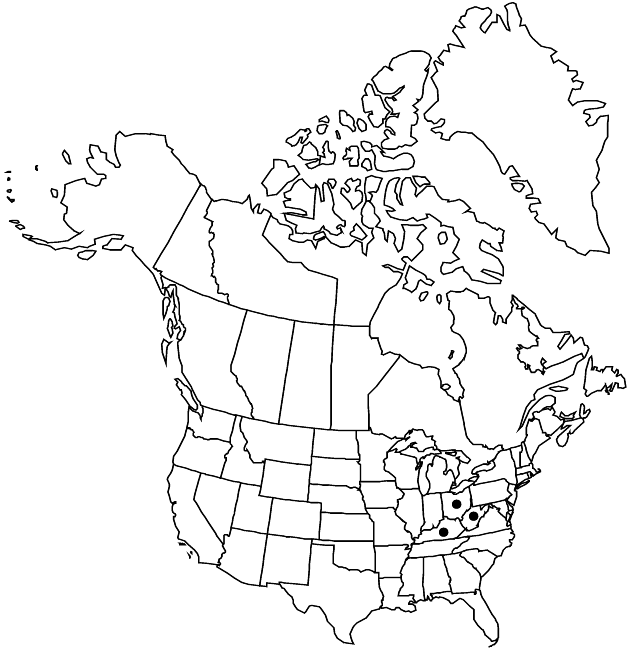Erigeron pulchellus var. brauniae
Rhodora 38: 235. 1936.
Endemic
Treatment appears in FNA Volume 20. Treatment on page 327.
Stems glabrous. Leaves margins ciliate, faces glabrous. Ray corollas blue to pinkish. Disc corollas 4.5–6 mm. Cypselae glabrous or glabrate.
Phenology: Flowering Apr–Jun.
Habitat: Mesic slopes and alluvial forests, sandstone soils on or near the western margin of the Appalachian Plateau (most abundant in the Cliff Section of the Cumberland Plateau)
Elevation: 100–1000 m
Distribution

Ky., Ohio, W.Va.
Discussion
Stems and leaves both are glabrous in the weakly delimited var. brauniae. Plants with glabrous leaf faces occur sporadically in various parts of the range of var. pulchellus (Georgia, Maryland, Pennsylvania, South Carolina, and West Virginia); in those plants, stems usually are sparsely hirsuto-villous.
Selected References
None.
Lower Taxa
None.
... more about "Erigeron pulchellus var. brauniae"
introrse +
connate +
distinct +
herbaceous +
scarious +
hirsute +
papillate +
continuous +
decurrent +
1-nerved +
linear;lanceolate oblanceolate or spatulate +
ribbed +
stigmatic +
barbellate +
persistent +
28;36 +
absent +
reduced +
absent +
2(-4)-nerved +
dimorphic +
1.3mm;1.8mm +
absent +
staminate +
straight +
eglandular +
glabrous +
distinct +
proximal +
1;5 +
bisexual +
dispersed +
Mesic slopes and alluvial forests, sandstone soils on or near the western margin of the Appalachian Plateau (most abundant in the Cliff Section of the Cumberland Plateau) +
indeterminate +
1;4 +
surrounding +
turbinate;hemispheric +
coiling +
alternate +
erect;spreading +
deltate +
2-carpellate +
inferior +
attached +
anatropous +
tough +
thick +
pistillate +
absent +
connate +
persistent +
distinct +
falling +
unequal +
equal +
slender +
Rhodora +
1936 +
pistillate +
absent +
fertile +
epaleate +
pitted +
flat;conic +
scale-leaved +
herbaceous +
stoloniform +
slender +
fibrous +
exalbuminous +
modifed +
2;3 +
stramineous +
persistent +
connate +
falling +
outer +
absent +
Endemic +
alternate +
eglandular +
glabrous +
deltate +
2-branched +
glabrous +
Erigeron pulchellus var. brauniae +
Erigeron pulchellus +
variety +
indurate +
shorter +
perennial +